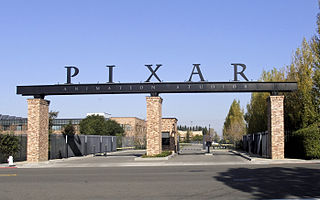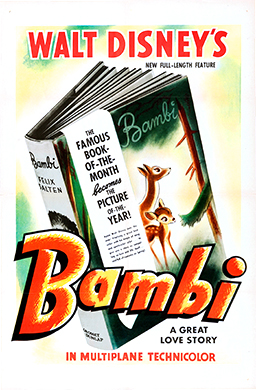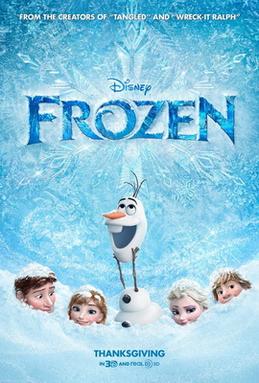Related Research Articles

Animation is a filmmaking technique by which still images are manipulated to create moving images. In traditional animation, images are drawn or painted by hand on transparent celluloid sheets (cels) to be photographed and exhibited on film. Animation has been recognized as an artistic medium, specifically within the entertainment industry. Many animations are computer animations made with computer-generated imagery (CGI). Stop motion animation, in particular claymation, has continued to exist alongside these other forms.

The Walt Disney Company is an American multinational mass media and entertainment conglomerate that is headquartered at the Walt Disney Studios complex in Burbank, California. Disney was founded on October 16, 1923, by brothers Walt Disney and Roy Disney as Disney Brothers Cartoon Studio; it also operated under the names Walt Disney Studio and Walt Disney Productions before changing its name to The Walt Disney Company in 1986. In 1928, Disney established itself as a leader in the animation industry with the short film Steamboat Willie. The film used synchronized sound to become the first post-produced sound cartoon, and popularized Mickey Mouse, who became Disney's mascot and corporate icon.

Aladdin is a 1992 American animated musical fantasy comedy film produced by Walt Disney Feature Animation and released by Walt Disney Pictures. It is based on the Arabic folktale "Aladdin" from One Thousand and One Nights. The film was produced and directed by John Musker and Ron Clements from a screenplay they co-wrote with the writing team of Ted Elliott and Terry Rossio. Featuring the voices of Scott Weinger, Robin Williams, Linda Larkin, Jonathan Freeman, Frank Welker, Gilbert Gottfried and Douglas Seale, the film follows the titular Aladdin, an Arabian street urchin who finds a magic lamp containing a genie. With the genie's help, Aladdin disguises as a wealthy prince and tries to impress the Sultan of Agrabah to win the heart of his free-spirited daughter, Princess Jasmine, as the Sultan's evil vizier, Jafar, plots to steal the magic lamp.

Snow White and the Seven Dwarfs is a 1937 American animated musical fantasy film produced by Walt Disney Productions and released by RKO Radio Pictures. Based on the 1812 German fairy tale by the Brothers Grimm, the production was supervised by David Hand, and was directed by a team of sequence directors, including Perce Pearce, William Cottrell, Larry Morey, Wilfred Jackson, and Ben Sharpsteen. It is the first animated feature film produced in the United States and the first cel animated feature film.

Pixar Animation Studios is an American animation studio based in Emeryville, California, known for its critically and commercially successful computer-animated feature films. Since 2006, Pixar has been a subsidiary of Walt Disney Studios, a division of Disney Entertainment, a segment of the Walt Disney Company.
Modern animation in the United States from the late 1980s to the early 2000s is frequently referred to as the renaissance age of American animation. During this period, many large American entertainment companies reformed and reinvigorated their animation departments, following the dark age, and the United States had an overall profound effect on animation globally.

Walt Disney Pictures is an American film production company and subsidiary of Walt Disney Studios, a division of Disney Entertainment, which is owned by The Walt Disney Company. The studio is the flagship producer of live-action feature films within the Walt Disney Studios unit, and is based at the Walt Disney Studios in Burbank, California. Animated films produced by Walt Disney Animation Studios and Pixar Animation Studios are also released under the studio banner. Walt Disney Studios Motion Pictures distributes and markets the films produced by Walt Disney Pictures.

Cinderella is a 1950 American animated musical fantasy film produced by Walt Disney Productions and released by RKO Radio Pictures. Based on Charles Perrault's 1697 fairy tale, it features supervision by Ben Sharpsteen. The film was directed by Wilfred Jackson, Hamilton Luske, and Clyde Geronimi. The film features the voices of Ilene Woods, Eleanor Audley, Verna Felton, Rhoda Williams, James MacDonald, and Luis van Rooten.

Tangled is a 2010 American animated musical adventure fantasy comedy film produced by Walt Disney Animation Studios and released by Walt Disney Pictures. Loosely based on the German fairy tale "Rapunzel" in the collection of folktales published by the Brothers Grimm, the film was directed by Nathan Greno and Byron Howard, and produced by Roy Conli, from a screenplay written by Dan Fogelman. Featuring the voices of Mandy Moore, Zachary Levi, and Donna Murphy, Tangled tells the story of Rapunzel, a lost young princess with magical long blonde hair who yearns to leave her secluded tower. She accepts the aid of an intruder, the outlaw Flynn Rider, to take her out into the world which she has never seen.

Bambi is a 1942 American animated drama film produced by Walt Disney Productions and released by RKO Radio Pictures. Based on Felix Salten's 1923 novel Bambi, a Life in the Woods, the production was supervised by David D. Hand, and was directed by a team of sequence directors, including James Algar, Bill Roberts, Norman Wright, Sam Armstrong, Paul Satterfield, and Graham Heid.

Toy Story 3 is a 2010 American animated comedy-drama film produced by Pixar Animation Studios for Walt Disney Pictures. It is the third installment in the Toy Story series and the sequel to Toy Story 2 (1999). It was directed by Lee Unkrich, the editor of the first two films and the co-director of Toy Story 2, produced by Darla K. Anderson, and written by Michael Arndt, while Unkrich wrote the story along with John Lasseter and Andrew Stanton, respectively, director and co-writer of the first two films. The film's ensemble voice cast includes Tom Hanks, Tim Allen, Joan Cusack, Don Rickles, Wallace Shawn, John Ratzenberger, Estelle Harris, Jeff Pidgeon, Jodi Benson, John Morris, Laurie Metcalf and R. Lee Ermey, reprising their roles from previous films. Jim Varney, who voiced Slinky Dog in the first two films, died in 2000, 10 years before the release of the third film, so the role of Slinky was passed down to Blake Clark. The returning cast is joined by Ned Beatty, Michael Keaton, Whoopi Goldberg, Timothy Dalton, Kristen Schaal, Bonnie Hunt, and Jeff Garlin, who voice the new characters introduced in this film. In Toy Story 3, Andy Davis (Morris), now 17 years old, is going to college. Woody (Hanks), Buzz Lightyear (Allen), and the other toys are accidentally donated to Sunnyside Daycare, a daycare center, by Andy's mother (Metcalf), and the toys must decide where their loyalties lie.

Walt Disney Animation Studios (WDAS), sometimes shortened to Disney Animation, is an American animation studio that creates animated features and short films for The Walt Disney Company. The studio's current production logo features a scene from its first synchronized sound cartoon, Steamboat Willie (1928). Founded on October 16, 1923, by brothers Walt Disney and Roy O. Disney, it is the oldest-running animation studio in the world. It is currently organized as a division of Walt Disney Studios and is headquartered at the Roy E. Disney Animation Building at the Walt Disney Studios lot in Burbank, California. Since its foundation, the studio has produced 62 feature films, from Snow White and the Seven Dwarfs (1937) to Wish (2023), and hundreds of short films.

The Princess and the Frog is a 2009 American animated musical romantic fantasy comedy film produced by Walt Disney Animation Studios and released by Walt Disney Pictures. It is inspired in part by the 2002 novel The Frog Princess by E. D. Baker, which in turn is based on the German folk tale "The Frog Prince" as collected by the Brothers Grimm. The film was directed by John Musker and Ron Clements and produced by Peter Del Vecho, from a screenplay that Clements and Musker co-wrote with Rob Edwards. The directors also co-wrote the story with the writing team of Greg Erb and Jason Oremland. The film stars the voices of Anika Noni Rose, Bruno Campos, Michael-Leon Wooley, Jim Cummings, Jennifer Cody, John Goodman, Keith David, Peter Bartlett, Jenifer Lewis, Oprah Winfrey, and Terrence Howard. Set in New Orleans during the 1920s, the film tells the story of a hardworking waitress named Tiana who dreams of opening her own restaurant. After kissing prince Naveen, who has been turned into a frog by the evil voodoo witch doctor Facilier, Tiana becomes a frog as well and must find a way to turn Naveen and herself back into humans before it is too late.

The Disney Renaissance was a period from 1989 to 1999 during which Walt Disney Feature Animation returned to producing critically and commercially successful animated films. These were mostly musical adaptations of well-known stories, similar to the films produced during the era of Walt Disney from the 1930s to 1960s. The resurgence allowed Disney's animated films to become a powerhouse of successes at the domestic and foreign box office, earning much greater profits than most of the Disney films of previous eras.

Toy Story is an American media franchise owned by The Walt Disney Company. It centers on toys that, unknown to humans, are secretly living, sentient creatures. It began in 1995 with the release of the animated feature film of the same name, which focuses on a diverse group of toys featuring a classic cowboy doll named Sheriff Woody and a modern spaceman action figure named Buzz Lightyear.

Frozen is a 2013 American animated musical fantasy film produced by Walt Disney Animation Studios and released by Walt Disney Pictures. Inspired by Hans Christian Andersen's 1844 fairy tale "The Snow Queen", it was directed by Chris Buck and Jennifer Lee and produced by Peter Del Vecho, from a screenplay by Lee, who also conceived the film's story with Buck and Shane Morris.

Zootopia is a 2016 American animated buddy cop action comedy film produced by Walt Disney Animation Studios and released by Walt Disney Pictures. It was directed by Byron Howard and Rich Moore, co-directed by Jared Bush, and produced by Clark Spencer, from a screenplay written by Bush and Phil Johnston, and a story by Howard, Moore, Bush, Johnston, Jim Reardon, Josie Trinidad, and Jennifer Lee. The film stars the voices of Ginnifer Goodwin, Jason Bateman, Idris Elba, Jenny Slate, Nate Torrence, Bonnie Hunt, Don Lake, Tommy Chong, J. K. Simmons, Octavia Spencer, Alan Tudyk, and Shakira. Taking place in the titular city where anthropomorphic mammals coexist, it tells a story of an unlikely partnership between a rabbit police officer and a fox con artist as they uncover a criminal conspiracy involving the disappearance of some of its predatory citizens.
References
- ↑ Maltin, Leonard; Beck, Jerry (1980). Of Mice and Magic: A History of American Animated Cartoons. New York: McGraw-Hill. p. 89. ISBN 978-0-0703-9835-1.
- ↑ "Whiteman Film Due Tomorrow." Los Angeles Times 18 Apr. 1930: A9. Print.
- ↑ Pat Williams and Jim Denney (2004). How to Be Like Walt: Capturing the Disney Magic Every Day of Your Life. HCI. p. 133. ISBN 978-0-7573-0231-2.
- ↑ "Around Is Around (1951)". BFI. Archived from the original on June 22, 2018.
- ↑ Solomon, Charles (1989). Enchanted Drawings: The History of Animation. New York: Random House, Inc. pp. 231–232. ISBN 978-0-394-54684-1.
- ↑ "Aladdin (1992)". Box Office Mojo . Archived from the original on February 15, 2009. Retrieved March 17, 2009.
- ↑ Brevert, Brad (May 29, 2016). "'X-Men' & 'Alice' Lead Soft Memorial Day Weekend; Disney Tops $4 Billion Worldwide". Box Office Mojo . Retrieved January 28, 2022.
- ↑ "27th Annual Annie Award Nominee Showcase: Goddamn George Liquor Program". AWM.com. Archived from the original on 2007-10-09. Retrieved 2007-12-14.
- ↑ Subers, Ray (August 29, 2010). "'Toy Story 3' Reaches $1 Billion". Box Office Mojo. Retrieved April 11, 2023.
- ↑ Har-Even, Benny (March 29, 2022). "Lightyear In IMAX Will Feature 1.43:1 Aspect Ratio Scenes". Forbes. Archived from the original on March 14, 2022. Retrieved June 16, 2022.